 W
WBerlin is recognized as a world city of culture and creative industries. Numerous cultural institutions, many of which enjoy international reputation are representing the diverse heritage of the city. Many young people, cultural entrepreneurs and international artists continue to settle in the city. Berlin has established itself as a popular entertainment center in Europe.
 W
WThe Anne Frank Zentrum is a facility located in Berlin, which is committed to promoting a varied and lively society and to working against anti-Semitism, prejudice and any kind of discrimination against people.
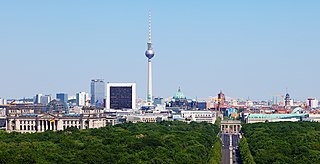 W
WBerlin's history has left the city with an eclectic assortment of architecture. The city's appearance in the 21st century has been shaped by the key role the city played in Germany's 20th-century history. Each of the governments based in Berlin—the Kingdom of Prussia, the 1871 German Empire, the Weimar Republic, Nazi Germany, East Germany and the reunified Federal Republic of Germany—initiated ambitious construction programs, with each adding its distinct flavour to the city's architecture.
 W
WThe Badeschiff is a floating public swimming pool in Berlin, the capital city of Germany. Situated in the East Harbour section of the River Spree, the Badeschiff allows citizens to swim in a sanitary environment near the river. The Spree itself is far too polluted to permit safe swimming.
 W
W.berlin (dotBERLIN) is an approved top level domain (TLD) for the Internet. It is a community-based sponsored top-level domain for Berliners. According to the dotBERLIN Organization, .berlin will allow all Berliners to register their domains under .berlin
 W
WBerlin German, or Berlin dialect, is the dialect spoken in the city of Berlin as well as its surrounding metropolitan area. It originates from a Brandenburgisch dialect. However, several phrases in Berlin German are typical of and unique to the city, indicating the manifold origins of immigrants, such as the Huguenots from France.
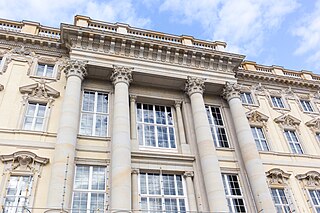 W
WThe Foundation for the Humboldt Forum in the Berlin Palace is a German foundation established by the Government of Germany to create the Humboldt Forum museum in the reconstructed City Palace, Berlin. It works closely with the Federal Government Commissioner for Culture and Media. Following a resolution passed by the German Parliament, the Bundestag, it receives funding from the Federal Ministry of Transport, Building and Urban Development.
 W
WThe Berlin Pride Celebration, also known as Christopher Street Day Berlin, or CSD Berlin, is a pride parade and festival held in the second half of July each year in Berlin, Germany to celebrate the lesbian, gay, bisexual, and transgender (LGBT) people and their allies. Since 1979, the event has been held each year. Berlin Pride is one of the largest gay and lesbian organized events in Germany and one of the biggest in Europe. Its aim is to demonstrate for equal rights and equal treatment for LGBT people, as well as celebrate the pride in Gay and Lesbian Culture.
 W
WA Berliner is a German doughnut with no central hole, made from sweet yeast dough fried in fat or oil, with a marmalade or jam filling like a jelly doughnut, and usually icing, powdered sugar or conventional sugar on top. They are sometimes made with chocolate, champagne, custard, mocha, or advocaat filling, or with no filling at all.
 W
WBerolina is the female personification of Berlin and the allegorical female figure symbolizing the city. One of the best-known portraits of Berolina is the statue that once stood in Alexanderplatz.
 W
WBoiler Room is an online music broadcasting platform based in London, commissioning and streaming live music sessions around the world. Founded in London in 2010, Boiler Room has now hosted shows in around 100 cities worldwide. It has regular operations in London, Amsterdam, New York City, Berlin, Lisbon, São Paulo, Mexico City, Kraków, Tokyo, Sydney, Lima and Los Angeles and produces about 30 to 35 new shows each month. Its music programming originally focused on electronic music such as garage, house, techno, dub but expanded to include grime, hip hop, classical, and jazz.
 W
Wc-base e.V. is a non-profit association located in Berlin, Germany. Its purpose is to increase knowledge and skills pertaining to computer software, hardware and data networks. The association is engaged in numerous related activities. For example, the society has had stands at large festivals, such as Children's Day, where they introduce young people to topics like robotics and computer-aided design.
 W
WCafé Achteck is a common local slang for certain public urinals in Berlin. These urinals consist of seven ornamentally decorated, green-painted cast iron wall segments, arranged onto an octagonal floor plan, provide standing room for seven men, and the eighth side is the entrance. The roof is crowned by an eight-sided ventilation hood. In front of the entrance, there is a privacy screen of at least three segments. The design for these urinals came from the city councillor Carl Theodor Rospatt in 1878. In 1920 there were about 142 of these urinals in Greater Berlin, and today about a dozen preserved specimens can be found.
 W
WThe Chaos Communication Congress is an annual conference organized by the Chaos Computer Club. The congress features a variety of lectures and workshops on technical and political issues related to security, cryptography, privacy and online freedom of speech. The event has taken place regularly at the end of the year since 1984, with the 2020 date and duration established in 2005. It is considered one of the largest events of this kind, alongside the DEF CON in Las Vegas.
 W
WThe coat of arms of Berlin is used by the German city state as well as the city itself. Introduced in 1954 for West Berlin, it shows a black bear on a white shield. On top of the shield is a special crown, created by the amalgamation of the mural crown of a city with the so-called people's crown, used in Germany to denote a republic. Berlin's various boroughs use their own emblems.
 W
WThe Deutsche Filmakademie is an independently run organization with a focus on filmmaking in Germany. It was founded in 2003 in Berlin as a way to provide native filmmakers a forum for discussion and a way to promote the reputation of German cinema through publications, presentations, discussions, and regular promotion of the subject in schools. Since 2005, the winners of the Deutscher Filmpreis are elected by the members of the Deutsche Filmakademie.
 W
WEaster in Berlin also known as Easter Berlin, founded in 1975, is the biggest Leather and Fetish event in Europe. It takes place in Berlin every year at Easter.
 W
WThe 26th European Film Awards were presented on 7 December 2013 in Berlin, Germany. The winners were selected by over 2,500 members of the European Film Academy. On 28 October 2013, a special seven-member jury convened in Berlin and, based on the EFA Selection list, decided on the winners in the categories cinematography, editing, production design, costume design, composer and sound design. On 4 November 2013, nominations for documentary were announced. The special documentary jury consist five members: Antonio Saura Despina Mouzaki, Claas Danielsen, Ally Derks and Jacques Laurent.
 W
WThe 28th European Film Awards were presented on 12 December 2015 in Berlin, Germany. The winners were selected by more than 2,500 members of the European Film Academy.
 W
WThe 30th European Film Awards were presented on 9 December 2017 in Berlin, Germany. The nominations and winners are selected by more than 2,500 members of the European Film Academy.
 W
WBerlin is a major center in the European and German film industry. It is home to more than 1000 film and television production companies and 270 movie theaters. Three hundred national and international co-productions are filmed in the region every year. The world renowned Babelsberg Studios and the production company UFA are located outside Berlin in Potsdam.
 W
WThe flag of Berlin has three stripes of red-white-red, the two outer stripes each occupying a fifth of its height, the middle the remaining three fifths. It is emblazoned with a bear on the civil flag, while it bears the coat of arms of Berlin on the state flag.
 W
WFolsom Europe, also known as Folsom Straßenfest, is an annual BDSM and leather subculture street fair held in September in Berlin, Germany since 2003.
 W
WThe Freedom Bell in Berlin, Germany, is a bell that was given as a gift from Americans to the city of Berlin in 1950 as a symbol of anti-communism, and was inspired by the American Liberty Bell. Since 1950, the bell has been located in the Rathaus Schöneberg, the former city hall of West Berlin.
 W
WThe Friedrichstadt-Palast, also shortened to Palast Berlin, is a revue in the Berlin district of Mitte. The term Friedrichstadt-Palast designates both the building itself, and the revue theater as a body with his ensemble. The present building is distinct from its predecessor, the Old Friedrichstadt-Palast, and therefore now also called the New Friedrichstadt-Palast.
 W
WThe Hanfparade is a hemp legalization demonstration in Berlin. It has taken place each year in August since 1997.
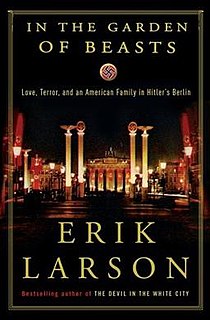 W
WIn the Garden of Beasts: Love, Terror, and an American Family in Hitler's Berlin is a 2011 non-fiction book by Erik Larson.
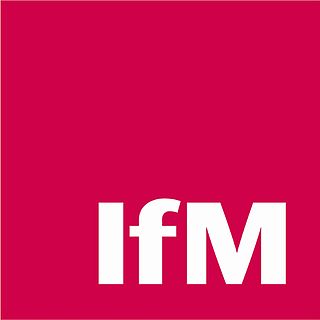 W
WThe Institute for Media and Communication Policy (IfM) was founded in 2005 as an independent research institution that is exclusively dedicated to issues surrounding media and communication policies. It was established in February 2006 in Berlin-Charlottenburg, but in November 2014 it moved to Cologne. The institute is funded by leading German public and private media organizations.
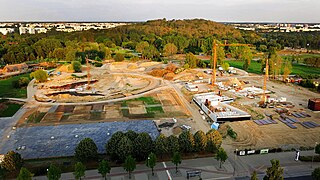 W
WThe Internationale Gartenausstellung 2017 was an international horticultural exhibition that took place in Berlin, Germany, in 2017.
 W
WThe Kaufhaus des Westens, usually abbreviated to KaDeWe, is a department store in Berlin. With over 60,000 square meters (650,000 sq ft) of retail space and more than 380,000 articles available, it is the second largest department store in Europe after Harrods in London. It attracts 40,000 to 50,000 visitors every day.
 W
WKiez is a German word that refers to a city neighbourhood, a relatively small community within a larger town. The word is mainly used in Berlin and northern Germany. Similar quarters are called Veedel in Cologne and Grätzl in Vienna.
 W
WThe Kindl-Bühne Wuhlheide is a cultural heritage site in Berlin, Germany, that serves as an open-air performance venue in the shape of an amphitheater. It is part of Volkspark Wuhlheide in the Berlin-Oberschöneweide neighborhood in the district of Bezirk Treptow-Köpenick. The Kindl-Bühne has a non-seated spectator capacity of 17,000 and a seated capacity of 15,300. It is the second-largest open-air stage in Berlin, trailing only the Waldbühne in size.
 W
WThe Kino International is a film theater in Berlin, built from 1961 to 1963. It is located on Karl-Marx-Allee in former East Berlin. It hosted premieres of the DEFA film studios until the fall of the Berlin Wall in 1989. Today it is a protected historic building and one of the main venues of the annual Berlin Film Festival, the Berlinale.
 W
WThe Kreuzberg Pride, usually known as Transgenialer CSD, was a parade and festival held in June each year in Kreuzberg, Berlin, to celebrate the lesbian, gay, bisexual, and transgender (LGBT) people and their allies. From 1998 to 2013, the event had been held each year. In the same month both Berlin Pride and Gay Night at the Zoo is held. More gay festivals in Berlin are the fetish festivals Folsom Europe and Easter in Berlin.
 W
WThe Kulturforum is a collection of cultural buildings in Berlin. It was built up in the 1950s and 1960s at the edge of West Berlin, after most of the once unified city's cultural assets had been lost behind the Berlin Wall. The Kulturforum is characterized by its innovative modernist architecture; several buildings are distinguished by the organic designs of Hans Scharoun, and the Neue Nationalgalerie was designed by Mies van der Rohe. Today, the Kulturforum lies immediately to the west of the redeveloped commercial node of Potsdamer Platz.
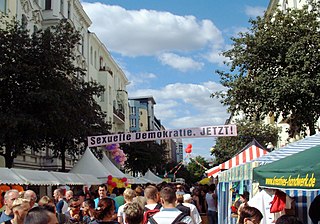 W
WBerlin, the capital city of Germany, has an active LGBT community with a long history. Berlin has many gay districts, with the biggest of them, Schöneberg, also being the first in the world.
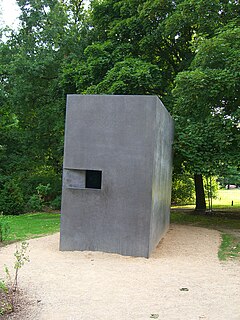 W
WThe Memorial to Homosexuals persecuted under Nazism in Berlin was opened on 27 May 2008.
 W
WNazi architecture is the architecture promoted by Adolf Hitler and the Nazi regime from 1933 until its fall in 1945, connected with urban planning in Nazi Germany. It is characterized by three forms: a stripped neoclassicism, typified by the designs of Albert Speer; a vernacular style that drew inspiration from traditional rural architecture, especially alpine; and a utilitarian style followed for major infrastructure projects and industrial or military complexes. Nazi ideology took a pluralist attitude to architecture; however, Adolf Hitler himself believed that form follows function and wrote against "stupid imitations of the past".
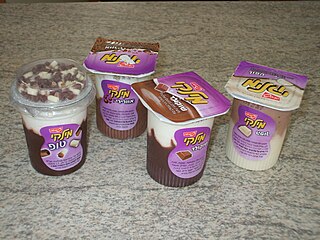 W
WOlim L'Berlin was the name of a Facebook page that coined a snowclone in 2014, and was terminated in early 2015. Comparing the high cost of living in Israel with the comparatively cheaper economic climate in Berlin, which has a growing community of Israeli expatriates, the page urged more Israelis to move to Germany, raising a storm of protest in Israeli social and political circles. Compounding the reaction was the Facebook page's use of the same verb (olim) that Jews use for aliyah.
 W
WThe Order of Merit of Berlin is this highest award of the German State of Berlin. Awarded in the name of the Senate of Berlin, the order had recognized outstanding contributions to the State of Berlin since 21 July 1987. Awarded each year on 1 October, the anniversary of the Berlin Constitution, the order is limited to no more than 400 living recipients. As of 2016 the order had been awarded 431 times, to 152 women and 279 men.
 W
WThe Path of Visionaries is a city art project under construction in Berlin, Germany. Located on the southern end of Friedrichstraße in Kreuzberg plaques are embedded in the sidewalks.
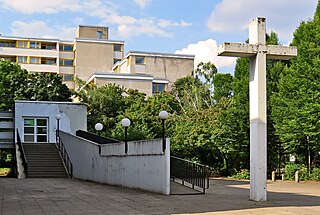 W
WThe Protestant Church of Plötzensee is situated in Berlin-Charlottenburg-Nord and was inaugurated in 1970 as the second church building of the Protestant Congregation in North-Charlottenburg within the Evangelical Church of Berlin-Brandenburg-Silesian Upper Lusatia. As it is located close to the former Plötzensee Prison, the church-building was designed as a memorial for the victims of National Socialism. The paintings Plötzenseer Totentanz painted by the Viennese artist Alfred Hrdlicka are an important part of this church.
 W
WThe Prussian Academy of Arts was a state arts academy first established in Berlin, Brandenburg, in 1694/1696 by prince-elector Frederick III, in personal union Duke Frederick I of Prussia, and later king in Prussia.
 W
WThe Royal School of Art in Berlin was a state-sponsored art school founded in 1869. The school was founded through its association with the Prussian Academy of Arts, and after unification stood as one of Berlin's art schools for over 70 years.
 W
WThe SeSiSo Club was a political and cultural discussion group in Berlin in the 1920s. Its members were of diverse political affiliations. The club had no official existence: its name was derived from the surnames of its chairmen, Hans von Seeckt, Walter Simons and Wilhelm Solf.
 W
WBerlin grew out of the historical city centre, the Nikolai quarter and its adjacent town of Cölln, both situated along the River Spree. It expanded its territories with areas such as Dorotheenstadt and Friedrichstadt. The creation of Greater Berlin in 1920 incorporated many former independent towns and municipalities such as Spandau, Charlottenburg and Köpenick.
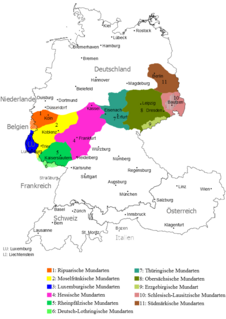 W
WSouth Marchian is an East Central German dialect. The Berlin dialect is affected by this dialect. The peculiarity of this dialect is the fact that it combines Low German and High German characteristics in a large area. This can be explained by the transformation of the Middle Low German dialect, which was also spoken in Frankfurt (Oder), by the High German influence into an East Central German dialect.
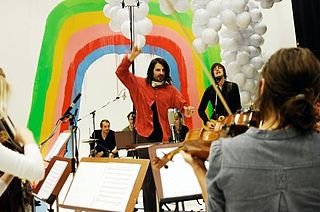 W
WThe String Theory is an international artist collective that provides a creative joint venture production platform for composers, artists, musicians and visual artists from different countries. The collective was founded in 2006. Their first project was The Berlin String Theory in 2006-2008, followed by The Göteborg String Theory in 2009-11. Since 2012 the collective's orchestra goes by the name The String Theory and has performed live with Swedish-Argentinian artist José González during a number of European and North American tours. Live recordings from those tours are featured on the double album Live in Europe. In November 2019, the ensemble were nominated for a Grammy Award 2020 in the category of Best Spoken Word Album for their collaborative album with American spoken word poet Sekou Andrews, Sekou Andrews & The String Theory.
 W
WBuddy Bears are painted, life-size fiberglass bear sculptures developed by German businesspeople Klaus and Eva Herlitz, in cooperation with sculptor Roman Strobl. They have become a landmark of Berlin and are considered unofficial ambassadors of Germany. The outstretched arms of the standing Buddy Bear symbolise friendliness and optimism. The first bears were displayed at an artistic event in Berlin in 2001.
 W
WThe Walk of Ideas was a set of six sculptures in central Berlin designed by Scholz & Friends for the 2006 FIFA World Cup football event in Germany. The sculptures, part of a campaign called Welcome to Germany – the Land of Ideas, were put up between 10 March 2006 and 19 May 2006. The opening of the exhibition was covered by reporters for the international mass media. The sculptures were on display until September 2006.